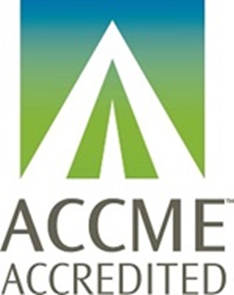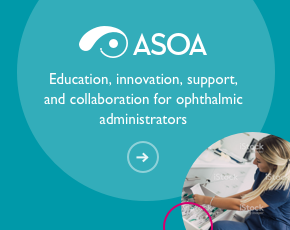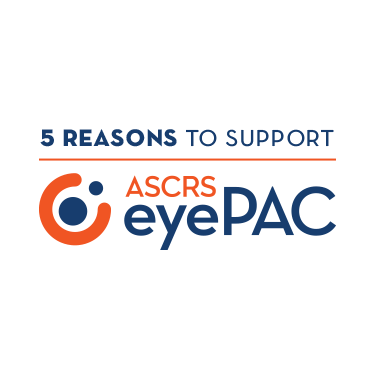ASCRS gratefully acknowledges the unrestricted educational grants received in support of this program from:
Bausch & Lomb
Dompé
Johnson & Johnson Vision
LENSAR Inc.
RxSight, Inc.
Sun Pharmaceutical Industries Ltd.
Tarsus Pharmaceuticals, Inc.
CME Mission Statement
ASCRS’ continuing medical education mission is to improve the competence of ophthalmologists/anterior segment surgeons by offering an avenue for the presentation and discussion of innovative techniques and technologies and fostering an open environment where current practices are presented and questions and improvements in patient care are continually sought.

Accreditation Statement
The American Society of Cataract and Refractive Surgery is accredited by the Accreditation Council for Continuing Medical Education to provide continuing medical education for physicians.
Designation Statement
The American Society of Cataract and Refractive Surgery designates this Other (blended live and enduring material)- each Live activity is designated for a maximum 2.0 AMA PRA Category 1 Credits™, and each enduring activity is approved for 1.0 AMA PRA Category 1 Credit™. Physicians should only claim credit commensurate with the extent of their participation in the activity.
All CME activities approved for AMA PRA Category 1 Credit™ are valid for recognition by the European Accreditation Council for Continuing Medical Education (EACCME). Physicians not licensed in the U.S. who participate in this CME activity are eligible for AMA PRA Category 1 Credit™.
Target Audience:
This educational activity has been designed for Anterior Segment surgeons, comprehensive ophthalmologists, residents, and fellows.
Educational Objectives:
Upon completion participants should be able to:
- Review skills needed during preoperative patient assessment for effective IOL counseling and selection to ensure satisfaction and realistic expectations.
- Evaluate various advanced IOL technologies, including monofocal, enhanced monofocal, Toric, EDOF, multifocal, small aperture, and customizable.
- Compare clinical practices for the surgical management of astigmatism at the time of cataract surgery, as well as any residual post-operative astigmatism.
- Describe different approaches for working with concerned or dissatisfied patients and for enhancing their overall outcomes.
Scientific Integrity and Disclosure of Financial Interest
It is the American Society of Cataract and Refractive Surgery’s policy that all continuing medical education is fair and balanced. Additionally, the clinical content of accredited educational activities must be evidence-based, support safe and effective patient care, and be free of commercial bias. All individuals in a position to control content of CME activities must disclose any and all financial interests for the past 24 months. ASCRS has mechanisms in place to identify and mitigate all conflicts of interest prior to an educational activity being delivered to learners and will disclose all relevant relationships (and absence of) to learners.
Notice About Off-Label Use Presentations
The ASCRS Annual Meeting may include presentations on drugs or devices, or uses of drugs or devices that may not have been approved by the Food and Drug Administration (FDA) or have been approved by the FDA for specific uses only. The FDA has stated that it is the responsibility of the physician to determine the FDA clearance status of each drug or device he or she wished to use in clinical practice.
ASCRS is committed to the free exchange of medical education. Inclusion of any presentation in this program, including presentations of off-label uses, does not imply an endorsement by ASCRS of the uses, products, or techniques presented.
CME Credit Questions
Send questions on CME credit claiming to [email protected].
ASCRS gratefully acknowledges the unrestricted educational grants received in support of this program from Dompé, Johnson & Johnson Vision, LENSAR Inc., RxSight, Inc., and Tarsus Pharmaceuticals, Inc.



